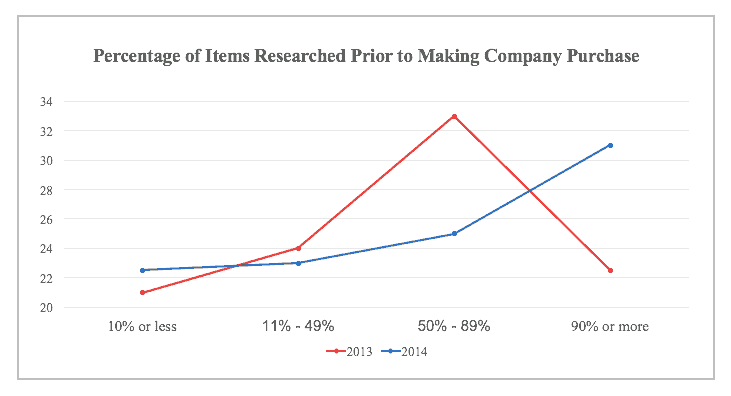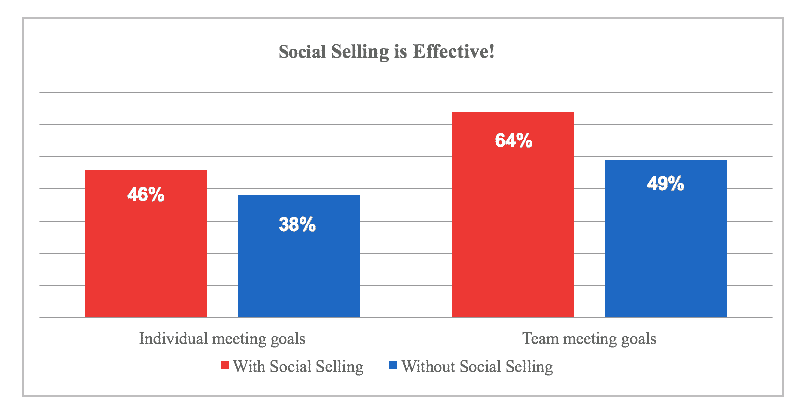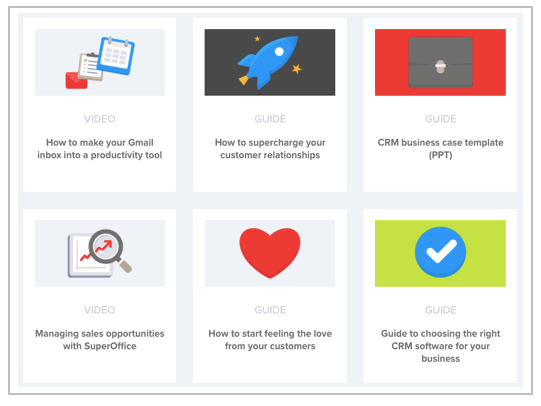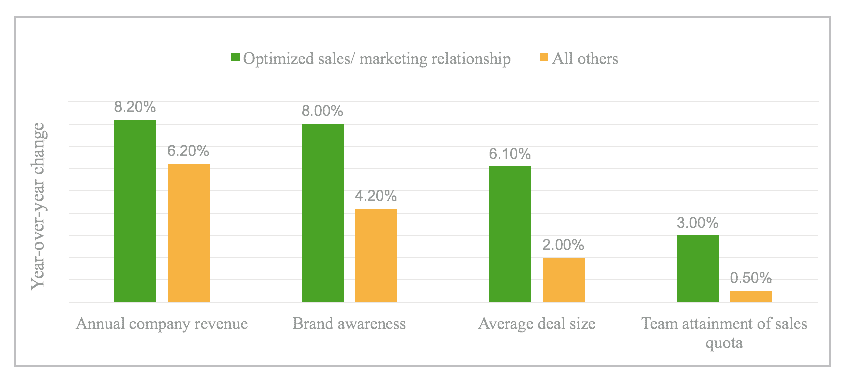It’s no secret that B2B selling has always been difficult. But it is perhaps even more so today. Salespeople feel they no longer have control over the sales process. As studies show, B2B buyers increasingly prefer to research and select products themselves, without being influenced by a salesperson:
- Only 29% of buyers want to talk to a salesperson to learn more about the product.
- 57% of purchasing decisions are made before any telephone contact.
- 34% of salespeople acknowledge that B2B selling has become more difficult.
But it doesn’t have to be that way. If you want to continue selling as much as you have in the past, you must first understand the new dynamics and trends in B2B selling. Then you need to learn the new sales strategies that will help you achieve your business goals.
That’s what this article is about. Find out how to evolve your B2B sales processes.
Sommaire
Today’s B2B buying process is not the same as yesterday’s
The B2B sales process has continued to change in recent years. Sales strategies that worked in the past, for the most part, are no longer operative today. If you are in B2B sales, you will have noticed that the processes are much more difficult today. In the past, when a decision-maker needed a product or solution, he or she would contact different salespeople to be presented with offers and negotiate. If he was satisfied with an offer, he would buy. The process was quite simple. Marketing was responsible for generating leads, bringing prospects into the conversion funnel. Sales was responsible for turning leads into customers. It was a predictive model.
The B2B customer journey has changed dramatically. Today, a B2B decision maker goes through an impressive number of steps before buying:
- The decision-maker identifies the problem.
- He searches the internet to qualify his problem.
- He continues to search the internet to identify all the potential solutions.
- He asks his friends for recommendations and analyses what people say about the solutions proposed on social networks, forums, etc.
- For each existing solution, he types its name into Google and reads reviews.
- It tests the proposed solutions in a trial period.
- During this process, they may click on an advertisement offering a solution to their problem.
- After he has taken all the available information, and only then, he contacts the companies offering the selected solution(s).
In short, the B2B decision maker has become much more independent. One study showed that when the decision-maker first contacted the company, between 60% and 70% of the decision-making process was already completed. B2B salespeople seem to have much less control. It is the decision-makers who are in a strong position. As a result of these changes in the B2B buying journey, marketing has become more powerful. Marketing teams have a lot more work to do than before! They are the ones who can influence potential buyers in their research phase, especially through content marketing. The role of the sales team has diminished, even if it remains decisive in many cases to close sales. These changes imply profound changes in the way B2B sales processes are approached.
Read our guide to setting up effective sales processes.
Portrait of the new B2B decision-maker / buyer
In a video posted on YouTube, Google’s B2B Director Hanne Tuomisto-Inch pointed out that the average age of B2B decision-makers has dropped significantly over time. There are now a significant number of people between the ages of 18 and 35 who have the power to make purchasing decisions within their companies. These young decision makers have grown up with new technologies. They use them on a daily basis to feed their decision-making process. These sociological developments have led to a revolution in the act of buying B2B products or services. Many of these young decision-makers have become accustomed to searching the internet themselves, getting information and reading content on their own rather than contacting companies. An Accenture study showed that 94% of B2B buyers admitted to researching on the internet before making a decision. The same study shows that decision-makers exploit a considerable number of digital sources to make their decisions: websites, search engines, media and blogs, social networks… This is the first big evolution.

Secondly, the modern decision maker has become much more sceptical of marketing and sales messages. A Forrester report showed that 59% of buyers prefer to do their research online rather than interact with a salesperson, believing that the goal of a salesperson is to sell more than to provide real solutions. The same study shows, not surprisingly, that for 68% of decision-makers, the priority is to be in contact with a salesperson who listens to their needs and provides them with relevant information. The study also shows that salespeople who include a social selling dimension in their strategy tended to perform better.

Another important change is that modern decision-makers on average take longer to make a purchase decision than before. The length of the sales cycle has increased by 22% in the last 5 years. There are several explanations for this. First of all, there are generally more people involved in the decision making process. Another explanation is that, again, decision-makers have access to much more information. It takes time to consult all the available information.
Another development is the role of recommendations. Modern decision-makers place a great deal of weight on the recommendations of their peers. They increasingly use social networks, forums and review sites to find out what others think. A recent study by Forrester showed that decision makers can discover 3 pieces of content about your company for every piece of content you create. And decision-makers place a very high value on this third-party content. More than ever, word of mouth is the biggest influencer.
All this to say that companies need to completely rethink their B2B sales approach and face the new challenges that lie ahead:
- The increase in available information allows prospects to move through the sales process themselves, without the need to interact with salespeople. As a result, the influence of salespeople on the buying decision is much less than in the past.
- Marketing and sales teams tend to be less and less aligned. As B2B sales processes evolve and become more complex, roles and responsibilities become blurred.
- Buyers are increasingly sceptical about marketing and sales messages. More generally, they have less and less confidence in the discourse of company representatives.
- While the influence of salespeople has decreased significantly, the influence of social networks and peers has increased significantly.
Discover 10 major trends in the world of B2B CRM software.
How can you develop your B2B sales processes to meet the new requirements of decision-makers?
Faced with these new demands from decision-makers, how can you adapt? How can you develop your B2B sales processes? Let’s face it: you can meet these new challenges, it’s possible. Here are 3 effective approaches to generate better leads and achieve your sales goals.
#1 Support prospects in their buying decision with content marketing
Just because modern decision-makers prefer to conduct their own research on the internet does not mean that they cannot interact with you during the process. In fact, the opposite is true. B2B buyers are big consumers of digital content. They search and read content throughout the decision-making process. While information has become easily accessible thanks to the internet, it is not always easy to find the right information.
This is where your role begins, where you can step in. Create content to address the issues your prospects are facing at different stages of their journey. We encourage you to create a content library, a resource centre listing your guides, articles, white papers, case studies, etc.

All of this content can be shared by your sales people with prospects when the time comes to provide them with the necessary information and encourage them to move forward in the conversion funnel. Not convinced by this approach and the role of content? Here are some statistics that might change your mind:
- 95% of decision-makers prefer salespeople who are able to provide content and information to help them navigate the different stages of their journey.
- 68% of consumers feel more positive about the brand when they have had the opportunity to consume branded content.
- 82% of buyers have read at least 5 pieces of content from the selected seller.
- Companies that implement a content strategy achieve better business performance.
Find out how to build a lead scoring strategy.
#2 Turn your salespeople into experts in their field
Sending your prospects relevant content will help you close more sales, for sure. But that’s not the only way to use content. Another approach is to turn your salespeople into experts in their field. As we have seen, B2B buyers have become increasingly sceptical of marketing and sales messages. We have also seen that decision-makers are eager to interact with salespeople who listen to their needs and are able to help them with relevant information.
Imagine sales people who can turn themselves into consultants and share content they have created for your company’s blog? Imagine CRM advisors able to produce and publish high value articles on customer relations developments and give their advice on optimising customer dialogue? Content not only provides information to your prospects, but also positions your sales people as experts. It is the best way to seduce your target customers and give them confidence in your brand.
Find out how to set up and promote webinars to generate more leads.
#3 Align your marketing and sales teams
According to several studies, a misalignment between marketing and sales can cost 10% or more of a company’s annual revenues. This is not surprising. The problems resulting from a misalignment of the two functions are numerous:
- Unable to agree on the definition of a “qualified lead”, resulting in marketing passing on leads that sales cannot convert.
- Lack of unification of the content library, preventing salespeople from delivering relevant content to prospects at the right time. We have seen the importance of content sharing.
- Selection of inappropriate KPIs that prevent teams from progressing and improving their performance over time.
Conversely, 56% of companies with aligned teams succeed in meeting their sales targets (and 19% of them exceed them). Apart from the revenue issue, aligning marketing and sales offers other benefits in terms of awareness, average order value, etc.

How can you align marketing and sales? The answer may not surprise you: through content! Here’s how, in concrete terms:
- Create a content library, bringing together all the content created by your marketers and sales people for your target audience.
- Ask your marketing team to educate the sales team on how best to use the content available to generate engagement from prospects, moving them along the conversion funnel.
- Involve your sales team in the creation of content, either by providing ideas to the marketing team or by asking your sales people to write content.
- Hold regular meetings with both teams to better coordinate efforts on both sides.
B2B selling has changed dramatically over the last 5-10 years. Gone are the days when you could just wait for prospects to come to you. You have to be proactive, identify the channels on which your prospects are and make them come to you by offering them quality and relevant content (= responding to their problems, their needs). More than ever, sales people need to work hand in hand with the marketing team and leverage content to move prospects through the pipeline. In an age dominated by information and its free flow, the key lies in the company’s ability to create and exploit content.
If you are interested in the subject of B2B sales, I strongly recommend that you read these articles:





